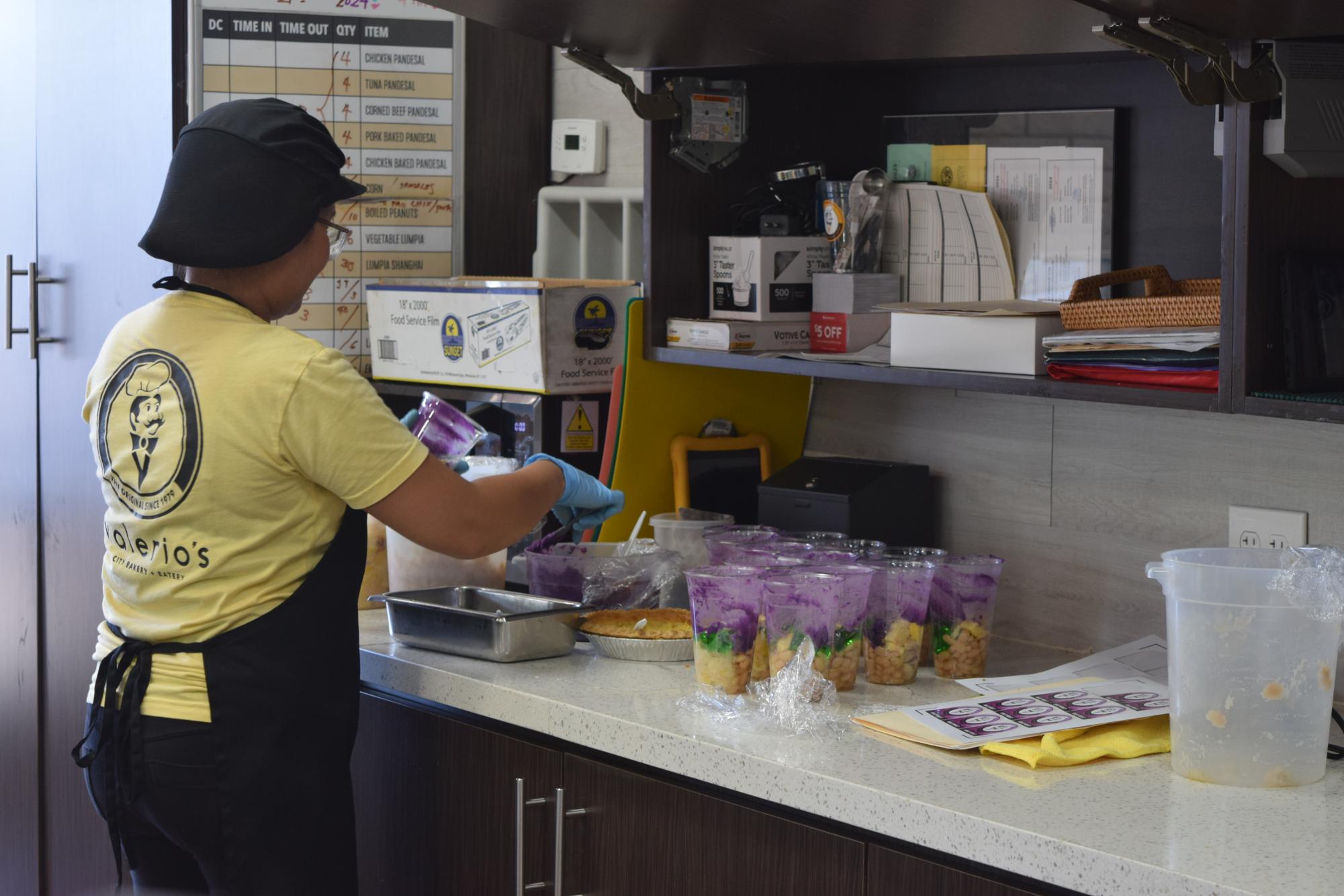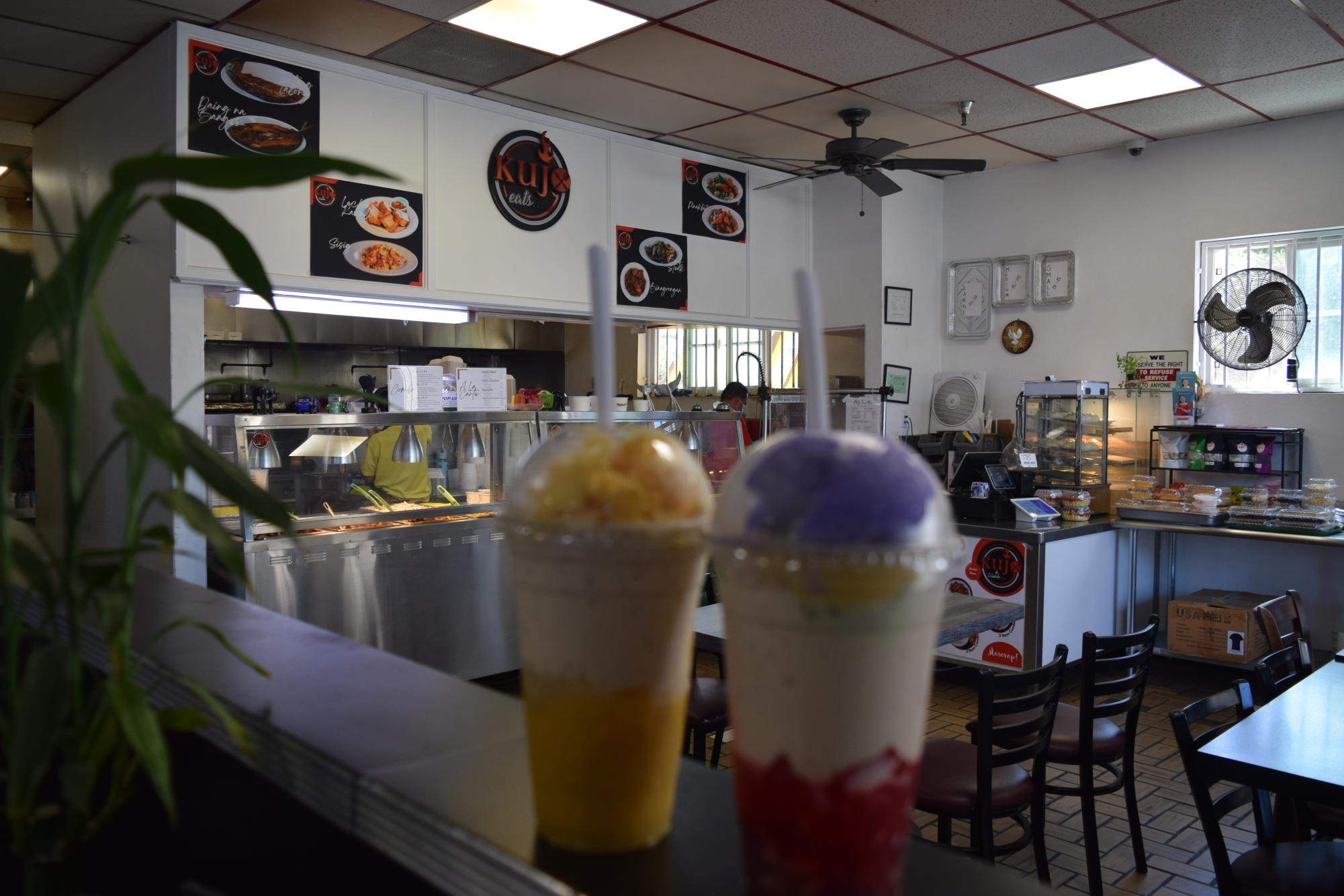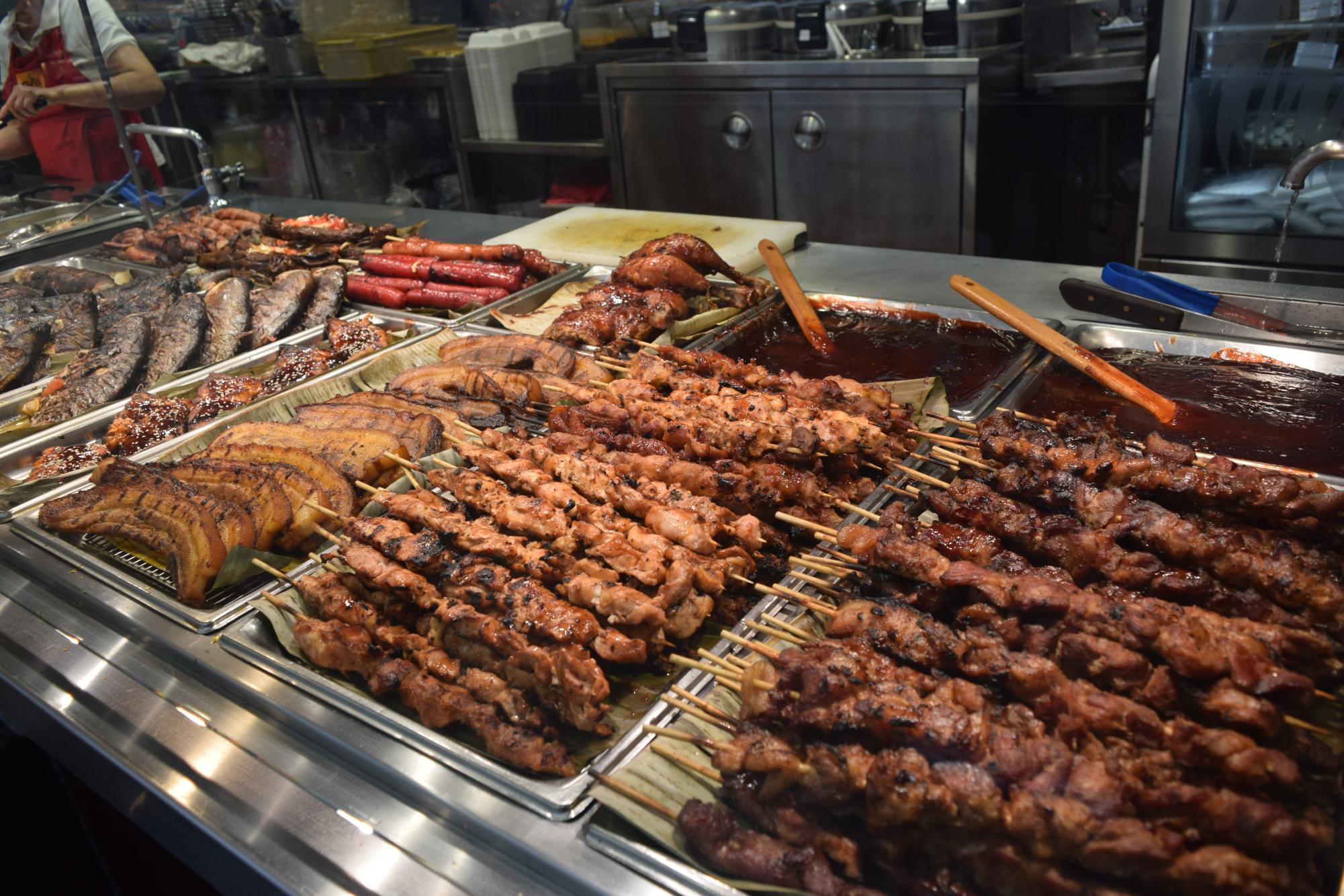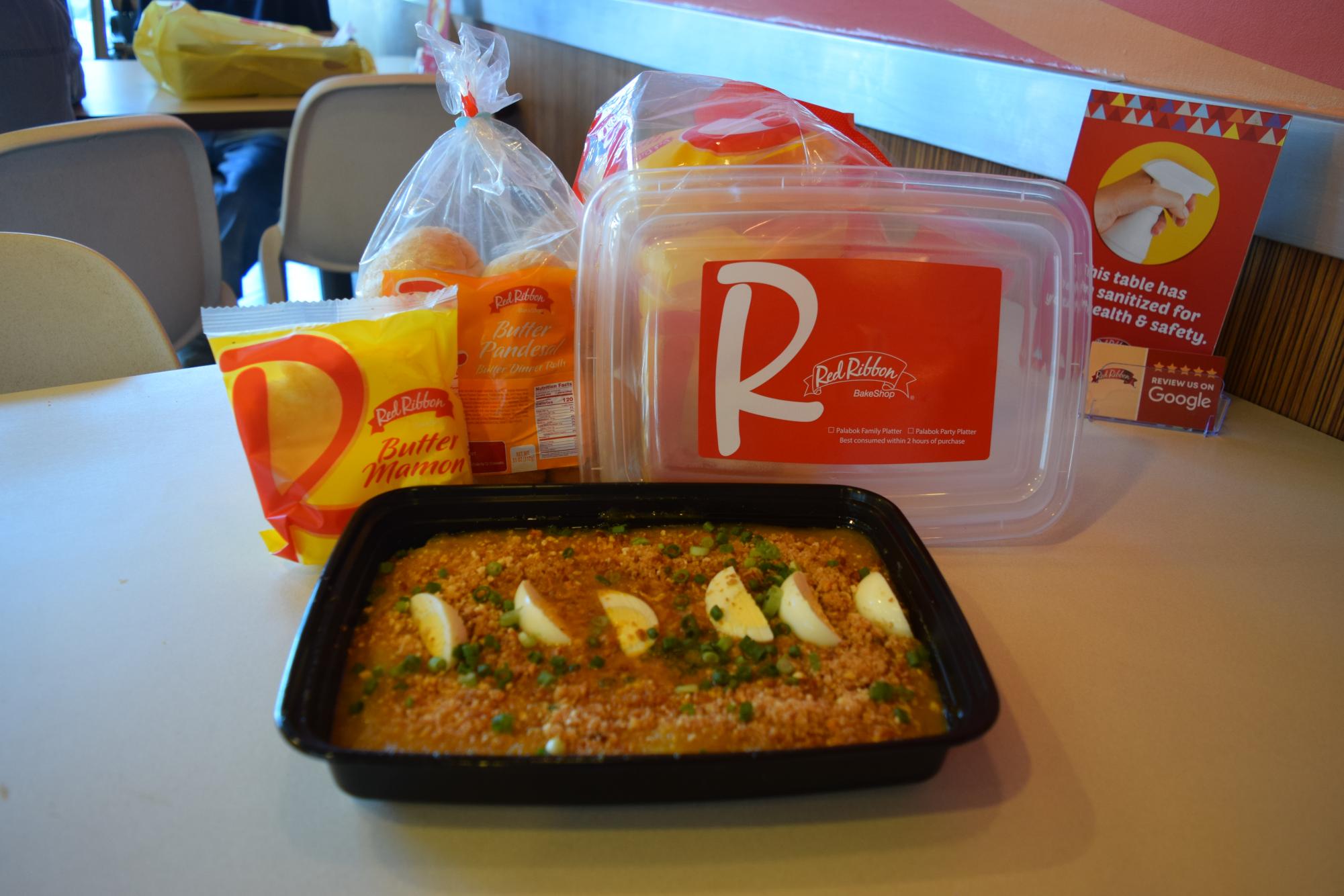Food is deeply intertwined into Filipino culture. There isn’t a better way to celebrate Filipino American History Month than tasting the diverse flavors within traditional dishes.
Offering street food right off the grill, freshly baked desserts or combo plates packed to the brim–National City has a diverse variety of Filipino restaurants and bakeries for people to explore.
Valerio’s City Bakery
Valerio’s City Bakery was first established in National City in 1979. Throughout the decades, the original location has preserved its roots. With a tiled roof, it almost resembles a small house on East 8th Street that can easily be passed if one doesn’t look closely.
According to their website, the business strives to be the home of the finest Filipino bread and pastries. Their mission is evident to customers after taking just one step through the door.
Warmth fills the bakery’s space and a sweet scent hangs in the air. Workers, wearing bright yellow aprons, attend to ovens that bake fresh products.

There are a large array of baked Filipino goods displayed on racks arranged throughout the store. Not a single shelf is left empty–in every corner there’s a new sweet treat to choose from.
The bakery first earned its recognition by selling pan de sal, a staple bread roll in the Philippines. On a daily basis, new batches of pan de sal are made and served right from the oven to customers. It is a perfect addition to any meal or can be eaten as a quick snack.
For bread with additional flavor the cheese rolls, ensaymada macapuno or pan de ube are some of the classics. Different rice cakes like kalamay, sapin-sapin and puto are known for being slightly sweet and can be served with coconut flakes.
Kujo Eats
“Kujo” is the nickname of the restaurant’s owner, Joel Soriano. It is a combination of Kuya, the Filipino term for older brother, and his first name Joel.
The menu items offered at Kujo Eats are inspired by Soriano’s childhood. He grew up in Hawaii but stayed in touch with his Ilocano culture through home cooked meals.
“This is my comfort food that I grew up with. A lot of these recipes are from my parents,” Soriano said.
Soriano points to the right side of the store to highlight the kitchen where multiple chefs overlook steaming trays of traditional Filipino dishes. For something savory, chicken adobo, menudo or kare kare are classic go-to meals.

Kujo Eats is also known for their halo halo and mais con yelo, two very popular Filipino desserts. Halo halo translates to mix-mix, which represents how it is packed with different ingredients. Shaved ice, milk, jellies, beans and ice cream are just some of the items included. Mais con yelo is very similar, except sweet corn is the main ingredient.
“We do our best to be on top of it. Nothing in jars or pre-made.We cook everything in house–the beans, gulaman, the bananas–we make everything here,” said Soriano.
The authenticity put into the foods at Kujo Eats is what makes the restaurant memorable. The origins of how the business started, the way thought is put into every flavor and the overall atmosphere serve as a way to become immersed in Filipino culture.
Zarlitos Family Restaurant
Zarlitos is a traditional sit-in restaurant with a comfortable and cozy atmosphere. Located across from Saint Mary’s Catholic Church, many families spend their Sunday mornings after mass at Zarlitos.
Drinks are served in glasses that have palm trees painted onto them. It is very reminiscent of the topical landscape of the Philippines.
Adding to this ambiance, the restaurant’s walls are scattered with paintings that further celebrate Filipino culture. Hanging in one corner is an image of a bahay kubo, a hut made out of bamboo and nipa palm leaves. These houses are usually found in rural areas and are not only a cultural tradition, but also seen as a symbol of community and resourcefulness.
Ordering silog from Zarlitos’ menu is great for first time customers that want to get a taste of a classic Filipino breakfast. Silog is a combination of the words sinangag (fried rice) and itlog (egg).
Silog is also paired with a protein, some of the most popular being longanisa (Filipino sausage), tocino (sweet pork) or tapa (marinated beef). Zarlitos’ has 12 proteins for customers to choose from.
Grill City
Grill City restaurants are usually found inside of Seafood City Supermarkets. Before buying a meal, customers can explore the aisles of the grocery store that offer Filipino produce and supplies.
 Skewers of barbeque chicken and pork at Grill City. (Catherine Nicole Domingo)
Skewers of barbeque chicken and pork at Grill City. (Catherine Nicole Domingo)
National City is where the first Seafood City Supermarket was founded in 1989, according to their website. It provides families with authentic Filipino ingredients, so they can continue to make their own cultural dishes at home.
For ready-made meals, Grill City specializes in serving Filipino street food and grilled cuisine. While standing in line to order food, customers can watch chefs sear skewers of barbeque chicken and pork. Before the skewers are wrapped in tin foil, they are dipped in a marinade that gives the meat a savory, but also slightly sweet, taste.
Grill City also has a selection of grilled seafood. Squid balls, tilapia, stuffed squid and bangus are popular dishes.
Red Ribbon Bakeshop
Red Ribbon is a Filipino bakery chain that originated in the Philippines. According to their website, they have over 30 stores located in the US. One location is down the street from Seafood City.
Red Ribbon is the perfect stop for a sweet treat. Many families go here to buy cakes before big celebrations. Some stand out flavors are the mango supreme, choco mocha crunch and ube overload. These flavors are a balance of sweet and creamy. For those who don’t want a whole cake, single slices are also sold.

Mamon, Filipino sponge cakes, are also a very popular dessert sold by the bakery. They have a range of flavors including butter, ube, mocha and cheese. For first time buyers, the most classic flavor is butter mamon. It is both fluffy and moist in texture, while simultaneously staying rich in flavor.






